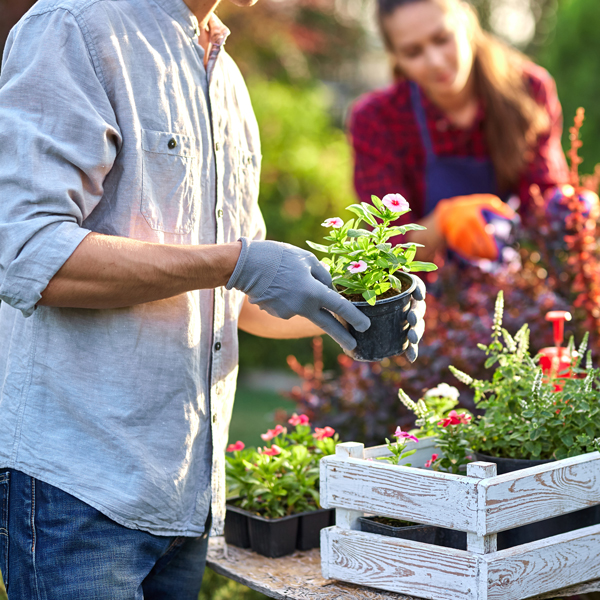From Beginner to Green Thumb: A Step-by-Step Trip Through the Art of Gardening

Understanding Your Gardening Room
To begin your gardening trip, it is important to understand the distinct qualities and limitations of your horticulture space. Are there any type of certain difficulties you may face, such as bad dirt high quality or limited water accessibility? Comprehending these variables will assist you make educated choices about the types of plants that will grow in your room.
Think about the size of your gardening location. If you have a little space, you might need to concentrate on container gardening or upright horticulture to maximize your expanding area. On the various other hand, if you have a huge area, you have the deluxe of planting a variety of plants and creating different areas within your garden.
Following, review the quantity of sunlight your area gets. This will determine which plants will grow and which ones might have a hard time. If your area is shaded, you can choose shade-loving plants like ferns or hostas. If your area gets full sunlight, you can expand a broad array of plants, consisting of flowers, veggies, and natural herbs.
Finally, consider any kind of limitations or challenges certain to your area. If your dirt quality is bad, you may need to amend it with garden compost or choose plants that are forgiving of less-than-ideal conditions. You can decide for drought-tolerant plants or carry out water-saving strategies like mulching. if water is scarce.
Choosing the Right Plant Kingdoms for Your Yard
Select plants that are well-suited to your garden's unique problems and your individual choices. When choosing plants for your yard, it is vital to consider elements such as sunlight, soil type, and climate. Some plants choose well-drained dirt, while others thrive in moist or clay-like dirt.
An additional important aspect to take into consideration is your individual choice. Do you like a garden filled up with vibrant blossoms, or are you extra interested in growing herbs and vegetables? Consider the objective you want your garden to offer and the visual you wish to attain. It's also worth thinking about the maintenance level of the plants you choose. Some plants call for more care and focus, while others are much more low-maintenance.
Preparing the Dirt for Planting
First, evaluate the condition of your soil to identify if any type of enhancements or modifications are needed. The top quality of your soil is important for the success of your yard. Start by examining the structure of the soil. Is it sandy, fertile, or clayey? Sandy soil drains swiftly, while clayey soil maintains water. Loamy soil is the excellent equilibrium between the two. Next off, inspect the pH degree of your soil. Most plants choose a somewhat acidic to neutral pH, around 6.0 to 7.0. If your dirt is too acidic or alkaline, you may need to change it utilizing soil amendments such as lime or sulfur. Additionally, you should take into consideration the nutrient useful site content of your soil. Conduct a dirt test to determine if any kind of vital nutrients are doing not have. This will certainly assist you determine which fertilizers or raw material to add. Make sure that your soil is well-draining. Inadequately drained pipes soil can cause water logged origins and various click for more info other plant wellness problems. Boost drain by adding natural matter like compost or peat moss if required. By assessing and making required changes to your soil, you can create an ideal atmosphere for your plants to prosper.
Nurturing and Maintaining Your Yard
Make sure to sprinkle your plants deeply, enabling the water to permeate the dirt and reach the origins. Regular weeding is additionally important to keep your yard free from undesirable plants that contend for nutrients and area. Frequently inspect your plants for any signs of infestation or illness and take instant activity to stop further damages.
Troubleshooting Common Gardening Issues
If you discover eaten leaves or plants that are shriveling for no obvious factor, you might have a bug invasion. If your plants have actually yellow or blemished leaves, they might not be getting adequate nutrients. Eliminate impacted plants and deal with the staying ones with natural fungicides or chemicals.
Verdict
By comprehending your gardening room, selecting the right plants, preparing the dirt, and supporting your garden, you have actually overcome typical gardening concerns like a pro. Currently, armed with knowledge and experience, you are all set to delight in the beauty and wealth of your thriving garden.

When top article picking plants for your yard, it is vital to think about variables such as sunlight, soil type, and environment. Some plants favor well-drained soil, while others prosper in damp or clay-like dirt (newbie gardening). By understanding your horticulture space, selecting the right plants, preparing the dirt, and nurturing your garden, you have gotten rid of common gardening concerns like a pro